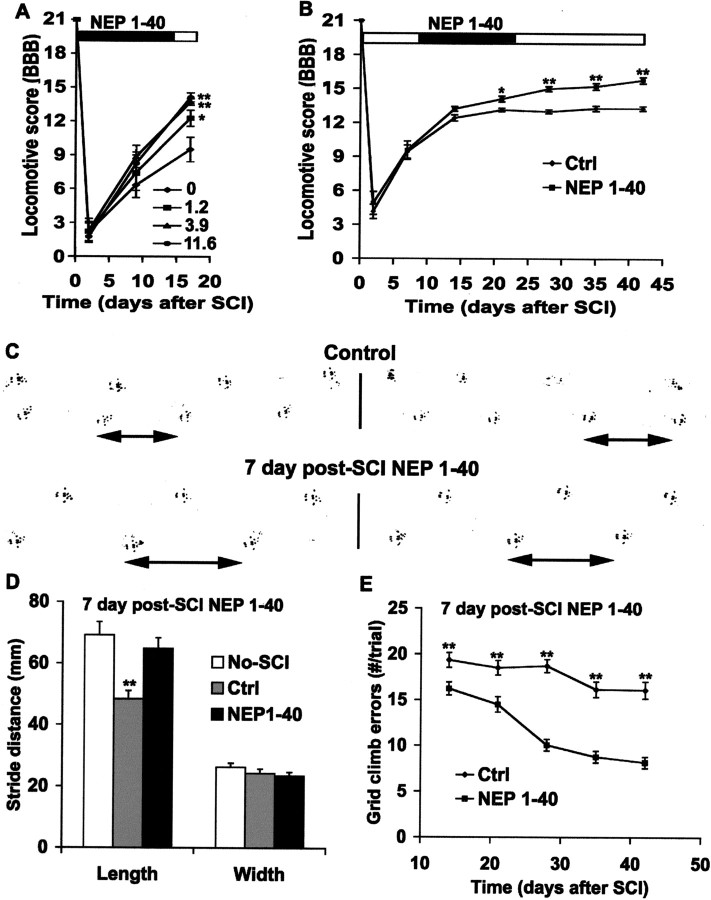Figure 8.
Systemic NgR antagonist peptide improves functional recovery after dorsal hemisection. A, The locomotor BBB score is reported as a function of time after dorsal hemisection in the vehicle-or NEP1–40-treated animals initiated at the time of SCI. B, The BBB score is plotted as a function of time after SCI in control or NEP1–40 animals receiving treatment 7 d after trauma. C, Two examples of the representative footprints from control (top) or NEP1–40 (bottom) animals treated 7 d after SCI are shown. The double-headed arrows indicate strike length for one step. D, Footprint analysis reveals a shorter stride length in control mice than uninjured or injured + NEP1–40 mice(treatment 7 d after injury), where as no differences are found in the stride width among the three groups. E, Hindlimb errors during inclined grid climbing are reported as a function of post-SCI time in the control or NEP1–40-treated groups (treatment after 7 d). In all the graphs, means± SEM from seven mice in each group are reported. The NEP1–40 values are statistically different from the control in A, B, and E. The control values are statistically different from no-SCI or SCI + NEP1–40 mice in D. *p < 0.05; **p < 0.01; Student's t test.

